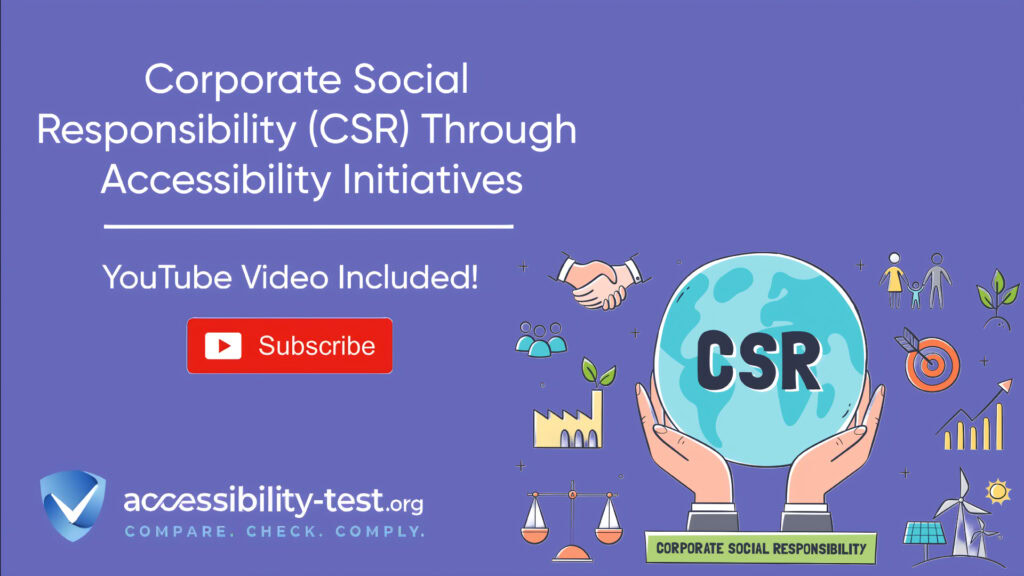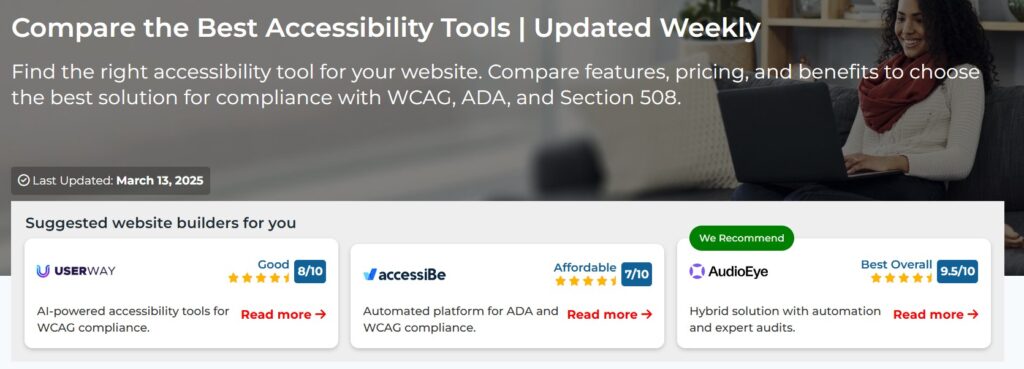
Businesses today face growing pressure to show their positive impact on society. One powerful way companies can do this is by making their digital presence accessible to everyone. Accessibility initiatives go beyond just following rules—they create real value for both businesses and society. Recent data shows that over 1 billion people worldwide live with some form of disability, representing about 15% of the global population. When companies make accessibility part of their social responsibility plans, they show they care about including everyone while also building stronger connections with their customers and communities.
How Accessibility Enhances CSR Efforts
When companies add accessibility to their social responsibility work, they create value in multiple ways. Accessibility isn’t just the right thing to do—it also makes good business sense.
First, focusing on accessibility helps companies reach more customers. By designing websites, apps, and services that everyone can use, businesses tap into markets they might otherwise miss. This expanded reach means more potential customers and better service for all users.
Accessibility initiatives also help companies meet growing legal requirements. In many countries, digital accessibility isn’t optional—it’s required by laws like the Americans with Disabilities Act (ADA) and regulations such as WCAG (Web Content Accessibility Guidelines). By meeting these standards early, companies avoid costly lawsuits while showing their commitment to doing the right thing.
“Being an established social enterprise in India, BarrierBreak is highly focused on giving back to the community. We believe in contributing towards the growth and development of the society and our initiatives are prioritized towards achieving the same,” notes Shilpi Kapoor, CEO of BarrierBreak, highlighting the connection between accessibility and broader social goals.
Taking action on accessibility also aligns businesses with global efforts like the United Nations Sustainable Development Goals. These efforts address inequality and create better access to information and services for everyone.
Perhaps most importantly, accessibility initiatives build trust. When businesses make their digital resources available to everyone, they show they value all potential users, customers, and employees.
Building Trust Through Inclusive Design Practices
Trust forms the foundation of strong business relationships. When companies use inclusive design practices, they build deeper trust with their customers, employees, and communities.
Inclusive design starts with recognizing that people interact with digital content in different ways. Some use screen readers, others use keyboard-only navigation, and some need captions for videos. By designing with these different needs in mind, companies create experiences that work for everyone.
This approach sends a clear message: the company values all users equally. That message builds trust with:
Customers with disabilities: When people can easily use a company’s website or app, they develop loyalty to that brand. They’re also more likely to tell others about their positive experiences.
Families and friends: The impact goes beyond direct users. Family members and friends of people with disabilities notice which companies care about accessibility and often make purchase decisions based on these observations.
Business partners: Other companies pay attention to accessibility efforts and may prefer to work with businesses that demonstrate similar values.
Job seekers: Potential employees look at how companies treat accessibility as part of judging company culture and values.
Torchit, a company focused on accessibility solutions, points out that “engaging in accessibility-focused CSR initiatives strengthens a company’s connection with the community and demonstrates a genuine commitment to social good”. This commitment doesn’t go unnoticed—it creates lasting positive impressions that help businesses stand out.
Inclusive design practices can include:
- Creating websites that work well with screen readers
- Adding captions and transcripts to videos
- Using clear, simple language
- Making sure forms and interactive elements work with keyboard-only navigation
- Testing with actual users who have different abilities
These practices don’t just help people with permanent disabilities. They also benefit people with temporary limitations (like a broken arm) and situational challenges (like trying to use a phone in bright sunlight). By addressing these various needs, inclusive design creates better experiences for everyone.
Meeting ESG Goals with Digital Inclusion
Environmental, Social, and Governance (ESG) goals have become increasingly important for businesses. Investors, customers, and employees all want to know how companies are addressing these key areas. Digital inclusion—making sure everyone can access and use digital tools—plays a major role in meeting the “S” (Social) part of ESG.
As one LinkedIn article notes, “ESG, CSR and social value all allow businesses to place winning bets on digital inclusion (DI) – singly and in a combined way”. This means companies can align their digital inclusion work across multiple responsibility frameworks for maximum impact.
Digital inclusion helps meet ESG goals by:
Reducing inequality: When digital tools and information are accessible to everyone, they help reduce gaps between different groups in society. This directly supports ESG goals focused on social equity.
Improving education access: Digital inclusion enables more people to access learning opportunities, helping companies meet ESG commitments related to education and skill development.
Supporting workforce diversity: Accessible digital tools make it possible for companies to hire from a wider talent pool, supporting diversity and inclusion goals.
Creating measurable social impact: Digital inclusion projects provide concrete results that companies can report in their ESG disclosures.
Virgin Media O2 offers a good example of combining ESG and digital inclusion. Their “Connect More” program includes tech recycling, employee volunteering for digital skills training, and specific social value commitments in communities. This approach shows how digital inclusion can support broader ESG strategies.
Companies looking to enhance their ESG performance through digital inclusion can start with their own websites and digital products. A free accessibility test, like those offered by various providers, can help identify barriers that might be preventing full access. Fixing these issues demonstrates a real commitment to inclusion that supports ESG reporting.
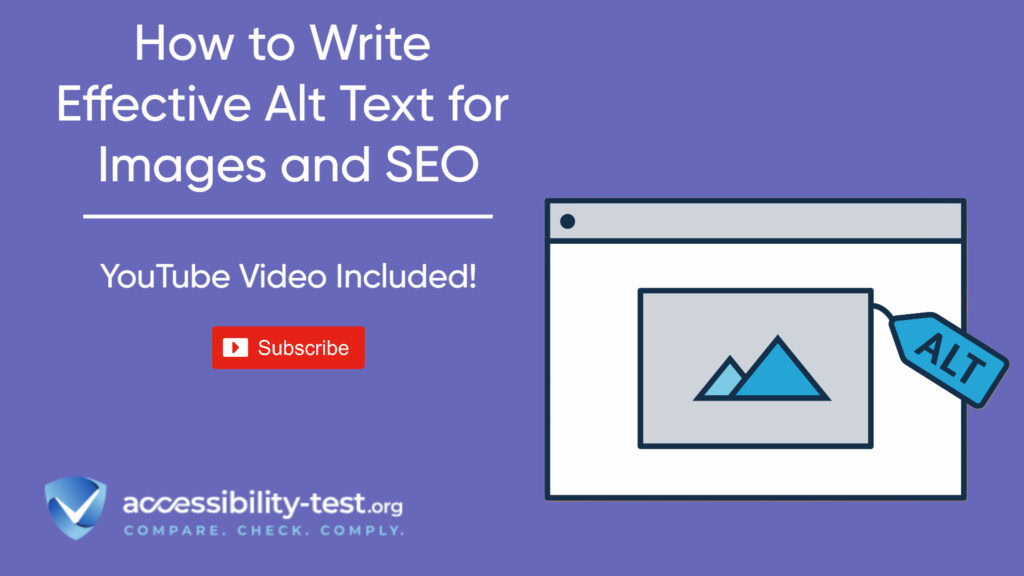
Starting Your Accessibility Journey
Beginning with accessibility doesn’t have to be complicated or expensive. Many companies start by simply checking their current situation and making small improvements over time.
The first step is often running an accessibility scan on your website. Several tools offer free initial scans that can identify major issues. These scans check for problems like missing image descriptions, poor color contrast, and keyboard navigation issues.
As one provider notes, “Find out in seconds if your website is accessible or if barriers exist”. These quick checks give you a starting point for making improvements.
After identifying issues, companies typically focus on fixing the most common barriers first:
- Adding proper text descriptions to images
- Ensuring forms can be completed using only a keyboard
- Making sure color combinations have enough contrast
- Structuring content with proper headings
- Providing captions for videos
These changes help many users immediately while showing a commitment to ongoing improvement. Companies often share their accessibility progress as part of their CSR reporting, showing transparency about both achievements and areas still needing work.
Real Benefits Beyond Legal Requirements
While avoiding lawsuits is certainly important, the benefits of accessibility initiatives go far beyond legal compliance.
When accessibility becomes part of a company’s social responsibility work, it creates multiple types of value:
Market expansion: Accessible websites and products reach more potential customers. The disability community represents a significant market—along with their families and friends, they control substantial spending power.
Innovation boost: Designing for accessibility often leads to creative solutions that benefit all users. For example, voice controls originally designed for users with mobility limitations now make products more convenient for everyone.
Employee engagement: Staff members take pride in working for companies that demonstrate clear values through accessibility initiatives. As noted in one source, “Inclusive workplaces boost employee morale and foster a sense of belonging, which can lead to higher productivity and retention rates”.
Brand differentiation: In competitive markets, accessibility efforts help companies stand out. They signal quality, attention to detail, and customer focus.
Community connections: Accessibility initiatives create natural opportunities to connect with disability organizations, advocacy groups, and other community partners.
These benefits multiply when companies approach accessibility as an ongoing journey rather than a one-time fix. By continuously improving accessibility and incorporating it into regular business processes, companies build lasting positive impact.
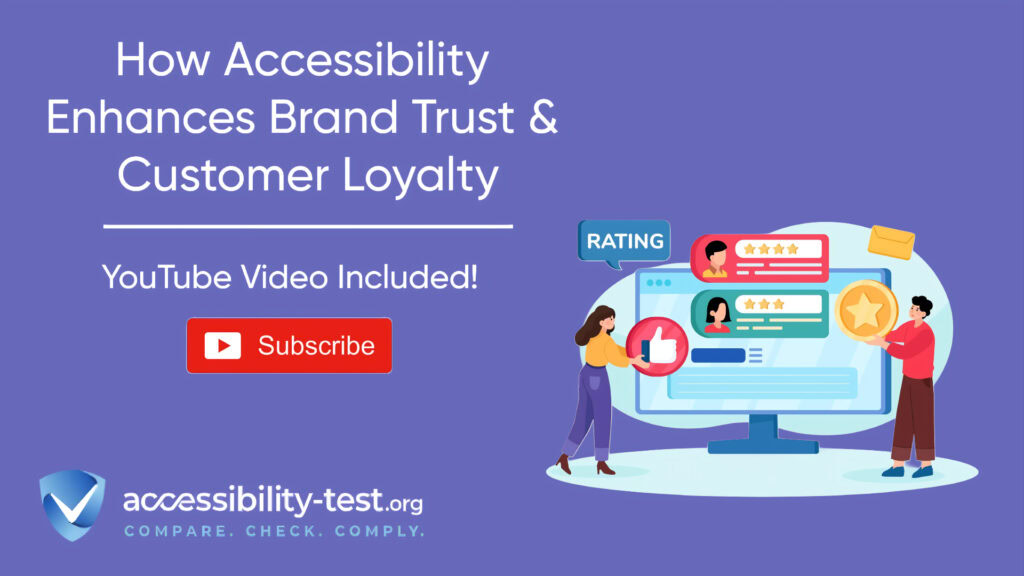
Successful Examples of Accessibility-Focused CSR
Several companies have already shown how accessibility initiatives can strengthen CSR programs while creating business value.
Microsoft’s AI for Accessibility program invests in projects that use artificial intelligence to create new tools for people with disabilities. These projects range from education tools to communication apps, all designed to remove barriers. By supporting this innovation, Microsoft enhances its reputation while helping advance solutions that may eventually benefit its own products.
Google has made significant progress with accessibility features across its products. From wheelchair-friendly navigation in Google Maps to accessibility improvements in Android and Google Workspace, these efforts show an ongoing commitment to inclusion. These features not only help users with disabilities but also create more flexible products that everyone can use in different situations.
In India, the Tata Group runs multiple disability inclusion programs. These include hiring initiatives, workplace accommodations, and community projects. Through these efforts, Tata demonstrates how accessibility can be addressed at multiple levels—from employment practices to product design to community engagement.
Virgin Media O2’s approach shows how companies can leverage employee involvement in digital inclusion. Their program uses employee volunteers to run digital skills training sessions in communities where the company has made specific commitments. This approach multiplies impact while creating meaningful experiences for employees.
These examples show that successful accessibility initiatives:
- Connect to the company’s core business
- Involve multiple parts of the organization
- Create benefits for both the company and community
- Build on existing strengths and resources
- Measure and report on results
By following these patterns, other companies can develop accessibility initiatives that strengthen their overall CSR efforts.
Overcoming Common Challenges
While the benefits of accessibility initiatives are clear, companies may face challenges when adding these efforts to their CSR programs.
Limited awareness is often the first hurdle. Many business leaders and team members don’t fully understand what digital accessibility means or why it matters. Education and training can address this gap, helping everyone see the value of inclusive design.
Initial costs sometimes cause concern, especially for smaller businesses. However, building accessibility from the beginning is much less expensive than fixing problems later. Companies can also start with the most important changes and improve gradually over time.
Technical complexity can seem overwhelming. Web accessibility guidelines include many technical requirements that may be unfamiliar to marketing teams or content creators. Partnering with accessibility experts or using automated testing tools can help manage this complexity.
Maintaining momentum after initial efforts can be difficult. Accessibility works best as an ongoing practice rather than a one-time project. Building accessibility checks into regular workflows and celebrating progress helps sustain efforts over time.
Companies that successfully overcome these challenges often find that accessibility becomes easier with practice. As teams develop new skills and incorporate accessibility into their regular work, what once seemed difficult becomes routine.
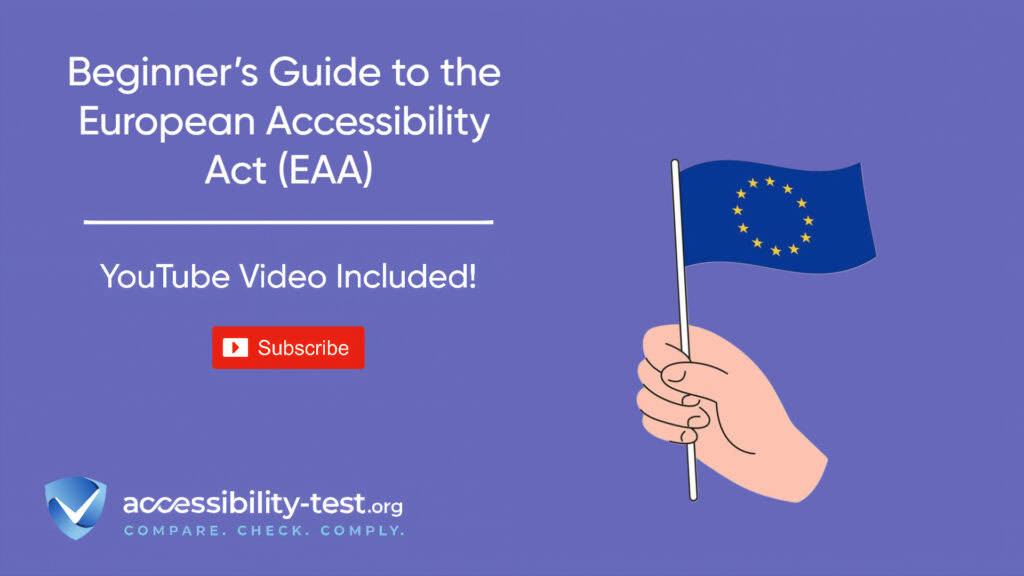
Measuring the Impact of Your Accessibility Initiatives
To demonstrate the value of accessibility as part of CSR, companies need to measure both their efforts and results.
Effective measurement typically includes:
Technical compliance metrics: How well does your digital content meet established standards like WCAG 2.1 AA? Automated testing tools can help track this over time.
User experience feedback: What do actual users with disabilities say about their experiences with your digital content? User testing and feedback provide insights that go beyond technical checks.
Business impact measures: Has improving accessibility increased website traffic, reduced customer service calls, or improved conversion rates? These business metrics help show the practical value of accessibility.
Brand perception indicators: How do customers, employees, and partners view your accessibility efforts? Surveys and social media monitoring can help track changes in perception.
CSR reporting metrics: How do your accessibility initiatives contribute to your overall social responsibility goals? Many companies include accessibility metrics in their annual CSR or sustainability reports.
By tracking these different types of measures, companies can show how their accessibility initiatives create value for both the business and society. These metrics also help identify areas for improvement and set goals for future efforts.
Getting Started | Your Next Steps
If you’re ready to make accessibility part of your company’s social responsibility efforts, here are practical steps to begin:
- Run a free accessibility scan on your website to identify current issues. This gives you a starting point and helps you understand the scope of work needed.
- Learn about accessibility standards like WCAG 2.1 AA, which provide guidelines for making digital content accessible. These standards offer a roadmap for improvements.
- Identify quick wins that can make an immediate difference, such as adding alternative text to images or fixing color contrast issues.
- Connect with disability organizations in your community to build relationships and get input on your efforts.
- Train key team members in accessibility basics so they can incorporate these practices into their daily work.
- Include accessibility in your CSR goals and reporting to show your commitment and track progress over time.
- Share your accessibility journey with customers, employees, and partners to build awareness and demonstrate your values.
Remember that perfection isn’t the goal—progress is. Every improvement makes your digital presence more inclusive and strengthens your social responsibility efforts.
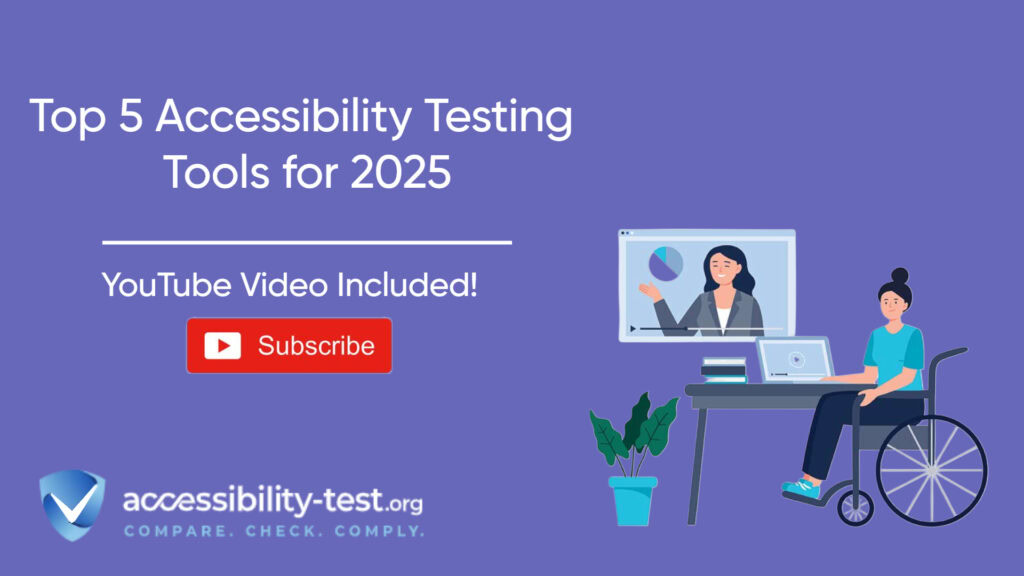
Visit Our Tools Comparison Page!

Run a FREE scan to check compliance and get recommendations to reduce risks of lawsuits
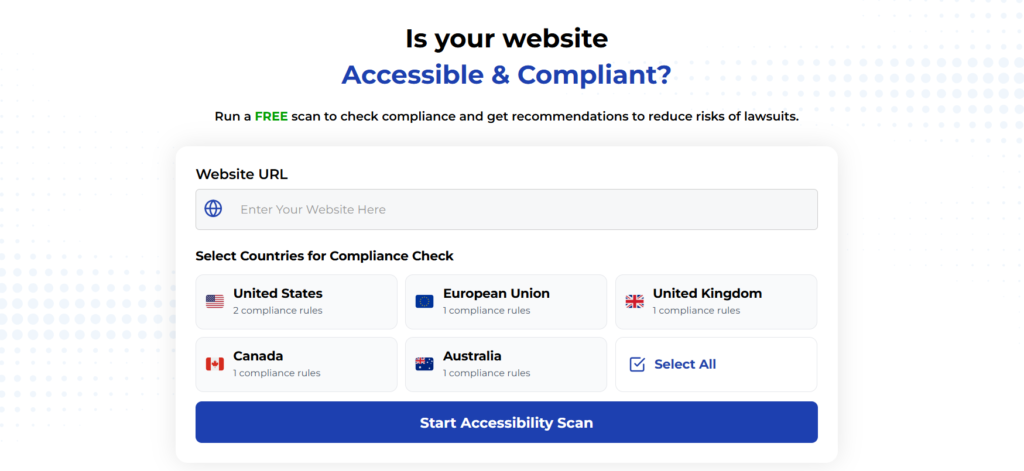
Adding accessibility to your company’s social responsibility program creates value in multiple ways. It helps you reach more customers, meet legal requirements, support global development goals, and build trust with important stakeholders.
The examples from companies like Microsoft, Google, Tata Group, and Virgin Media O2 show that accessibility initiatives can take many forms—from product innovations to workplace practices to community programs. What matters most is finding approaches that fit your company’s strengths and goals.
While challenges exist, the benefits of accessibility far outweigh the difficulties. Companies that make accessibility part of their CSR efforts often discover unexpected advantages in innovation, employee engagement, and market expansion.
As digital tools become even more central to everyday life, the importance of accessibility will continue to grow. Companies that address this need now will be better positioned for future success while making a real difference in people’s lives.
To start your accessibility journey, take advantage of free tools that can help you check your current status and identify opportunities for improvement. The path to full accessibility may be long, but every step creates positive impact for both your business and society.
Run a FREE scan to check compliance and get recommendations to reduce risks of lawsuits.



